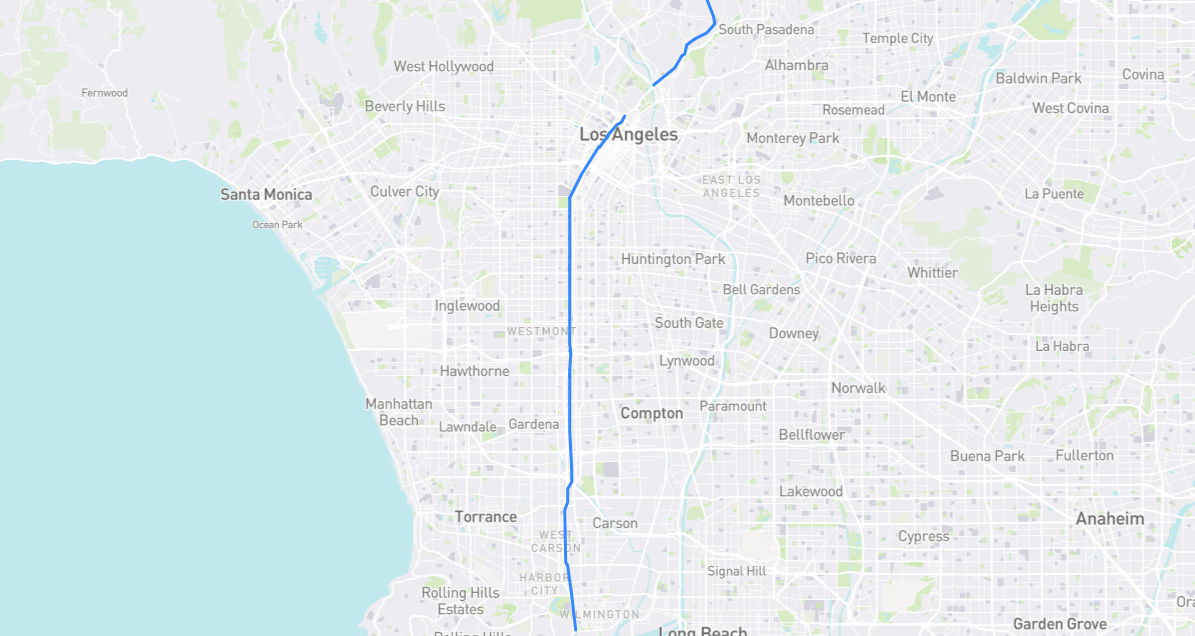You could write a book about the convoluted origins of Figueroa Street. It was first laid out in 1849 as Calle de los Chapules: Grasshopper Street. (Proper Mexican Spanish would be chapulines, but chapules is an allowed variant.) Legend holds that if these crop-devouring insects made it past this road and into local vineyards, the year’s grape harvest would be doomed. Whether or not that was the reason behind the buggy name, I can’t say, but around 1853-1857 a new street called Figueroa popped up a few blocks west, honoring General José Figueroa (1792-1835), who served as governor of Alta California at the end of his short life. During his two-year administration, Figueroa united the government, secularized the missions, and began offering land grants to Mexican soldiers – all major moments in California history. But back to the streets: Grasshopper was renamed Pearl Street in 1874 (although a ghost of Grasshopper – perhaps just a dirt alley – existed until 1886). In 1897, Pearl became Figueroa while the old Figueroa had its name changed to Boylston. Then, grasshopper-like, this new Figueroa would devour every street in its path as it expanded. Much later, the Arroyo Seco Parkway took a bite out of Figueroa itself.
Find it on the map:

